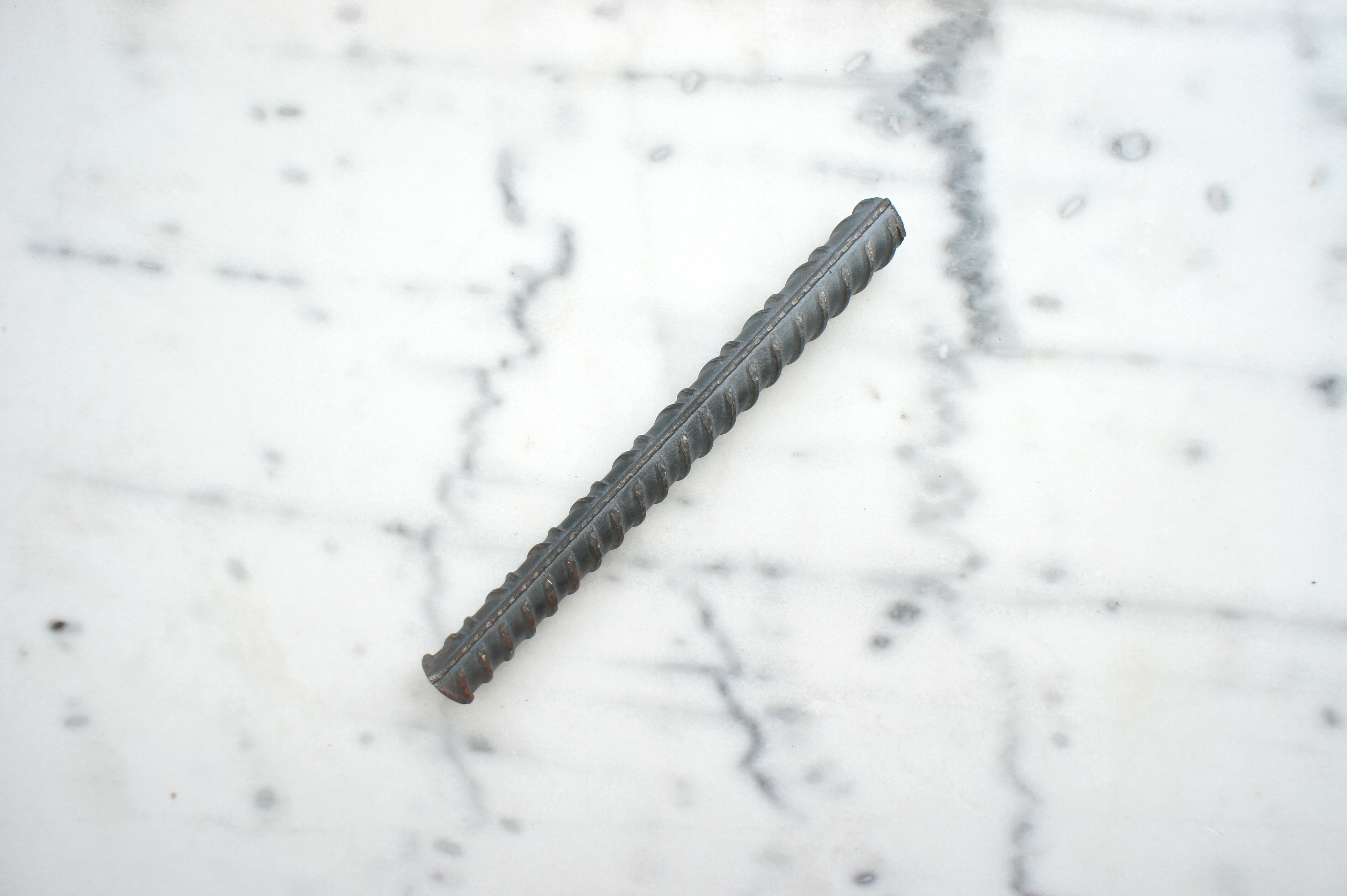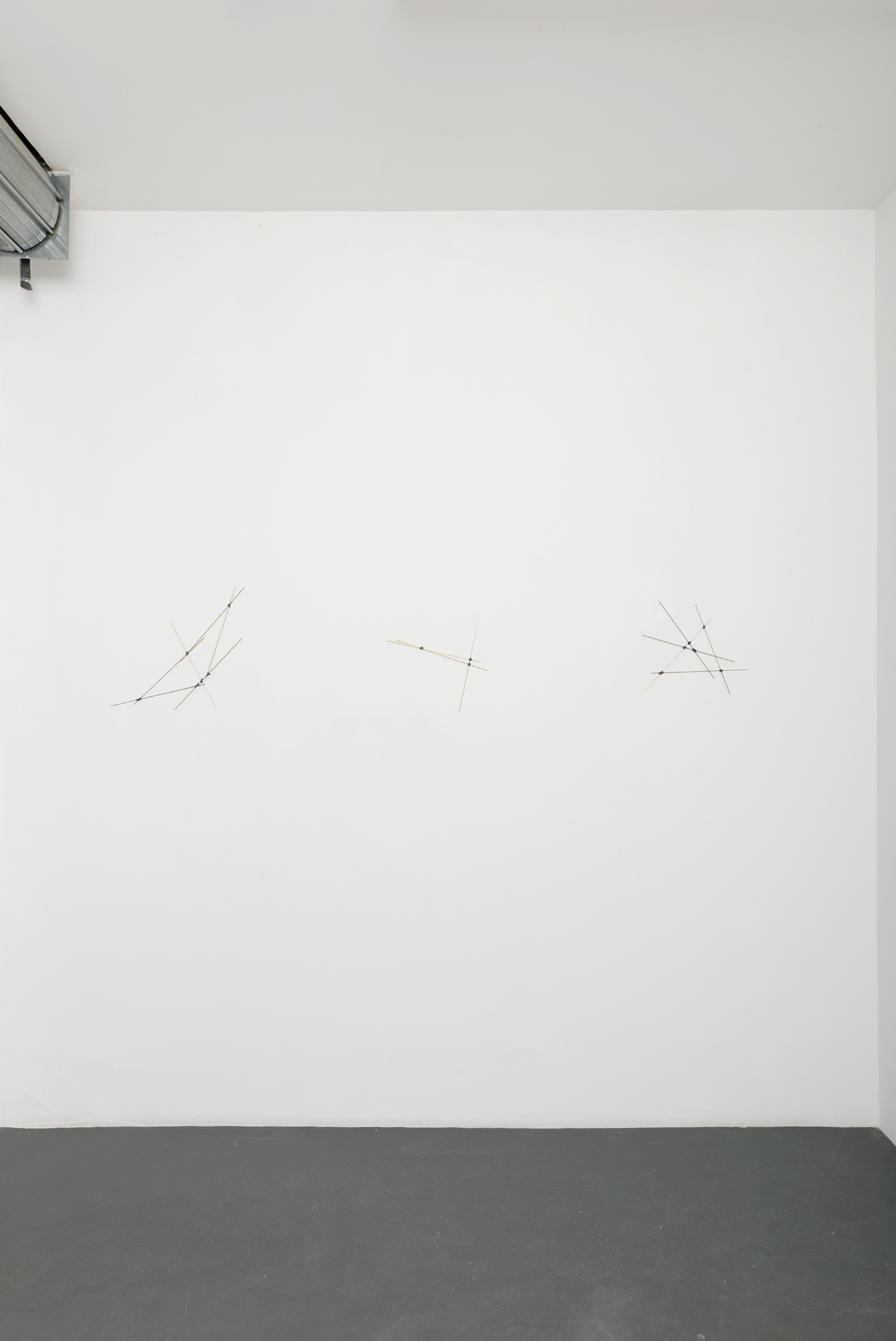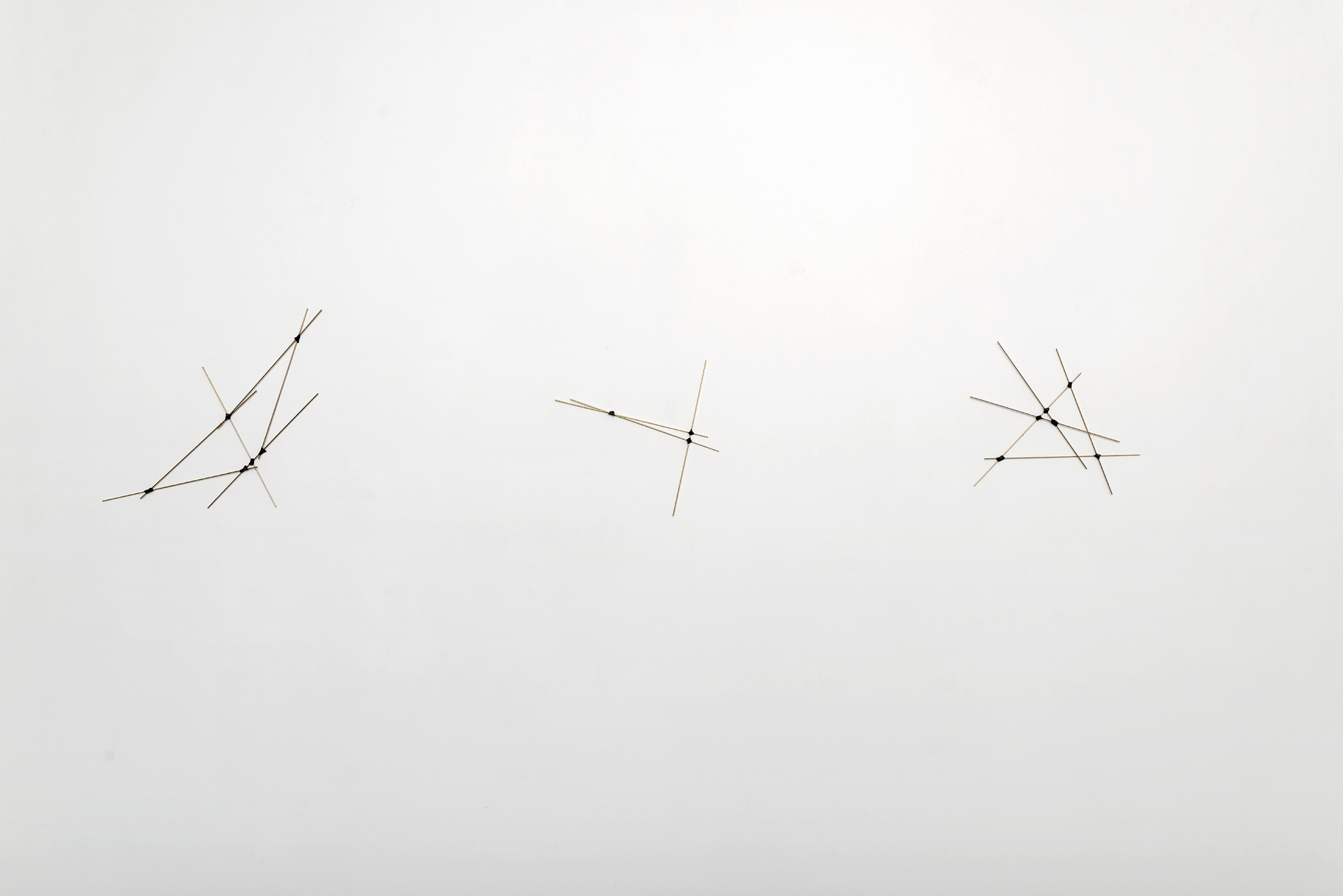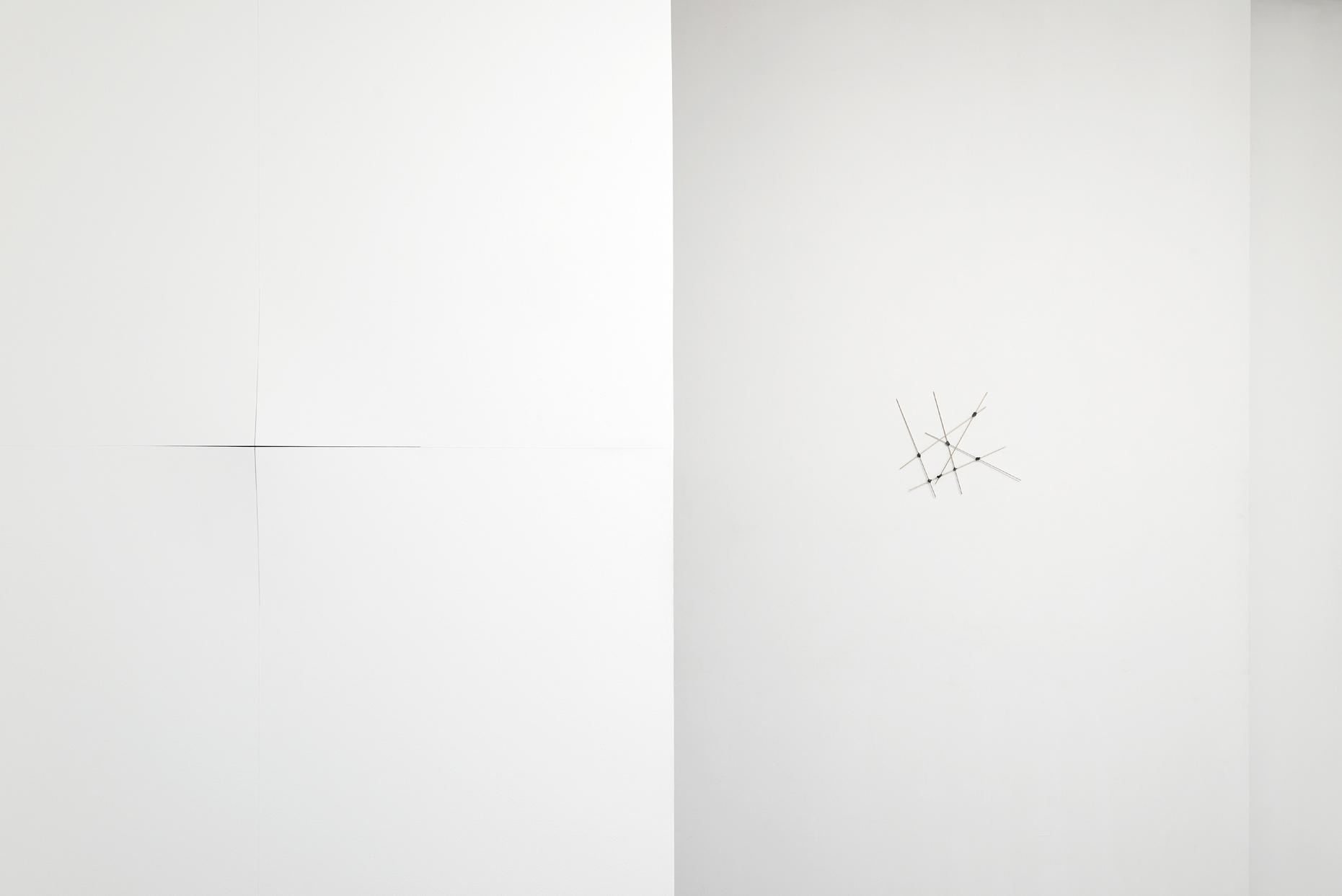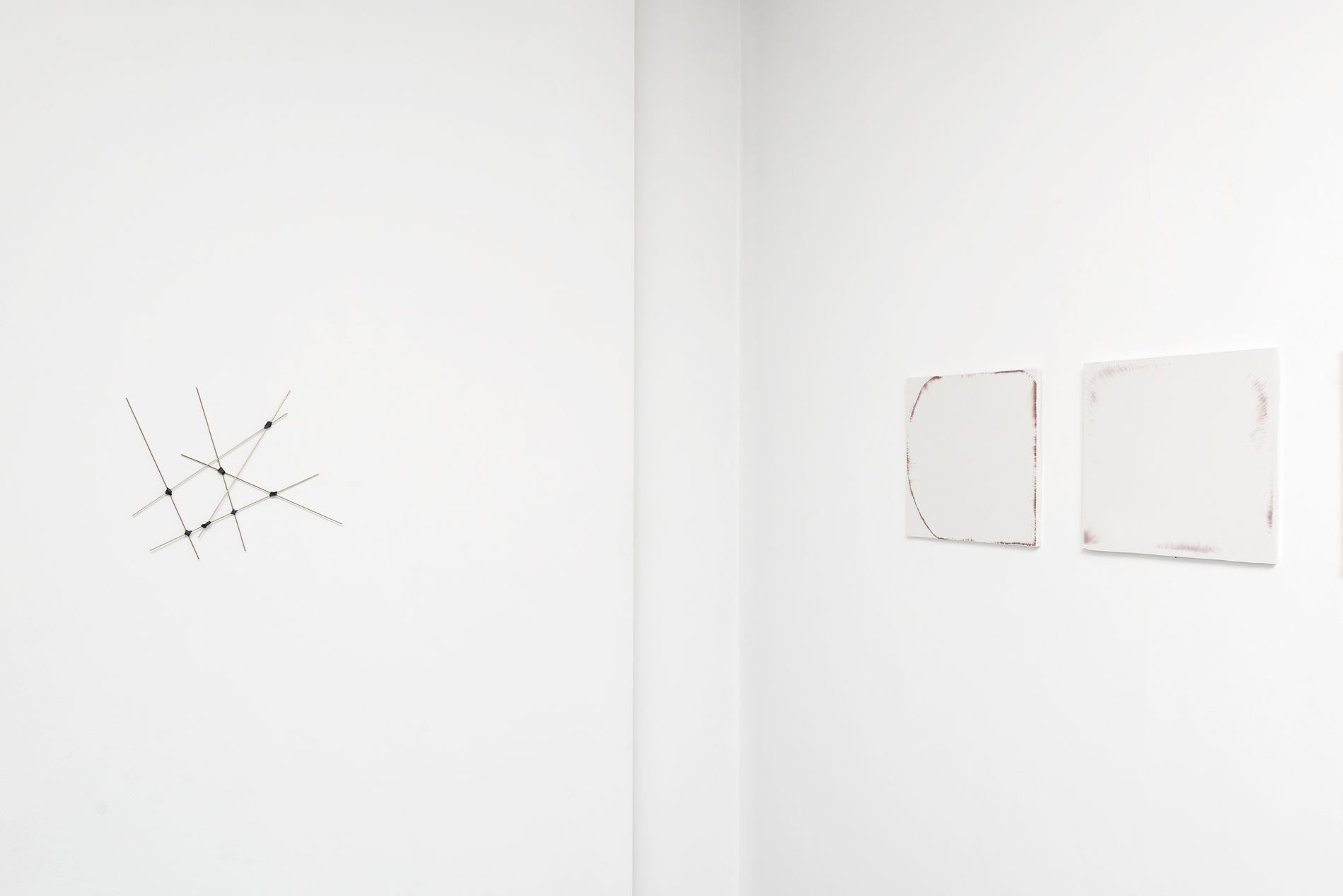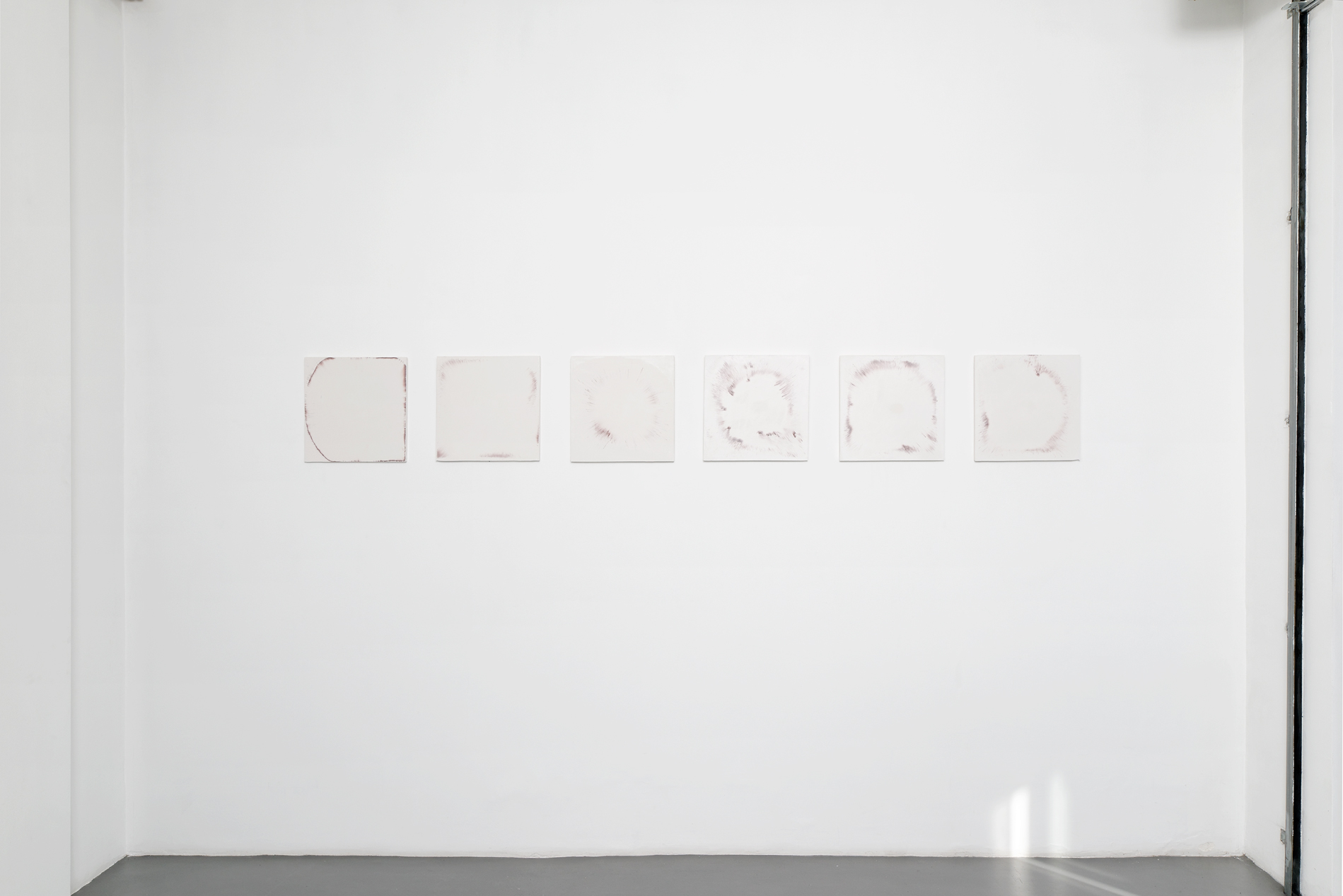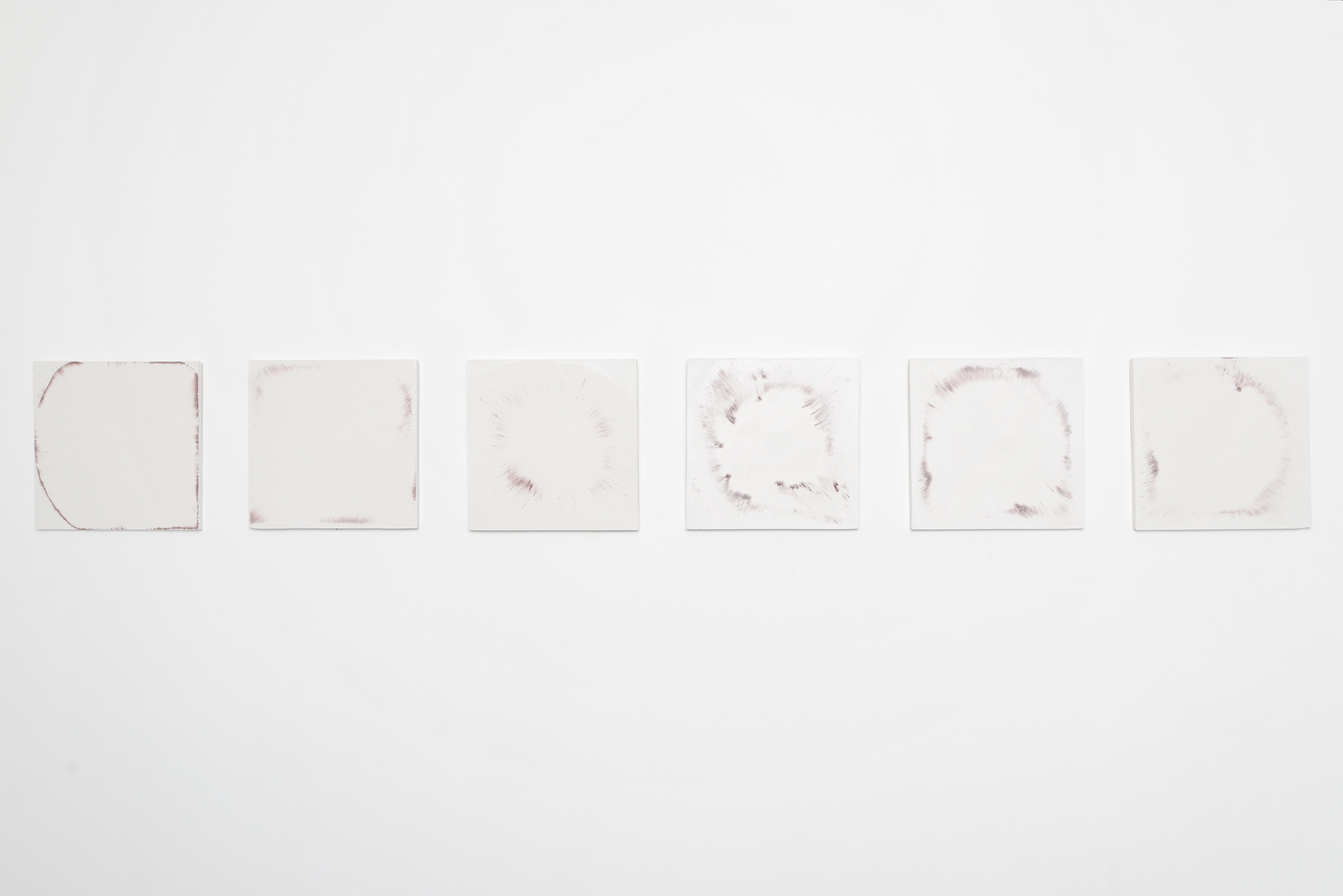Presentation :
L?effet de sol - Pierre Labat
Closer to the ground, the air is blocked, the void becomes conductor. An aerodynamic phenomenon, the ground effect deals with the lift and resistance of a surface in motion close to the ground. This connection to space and distance is central to Pierre Labat?s most recent pieces on display at Galerie Emmanuel Hervé. Following the exhibition ?Kaolin?, which questioned the power of a claimed and assumed whiteness at work, ?Dum Dum? (2008-2015) reasserts the principle with an epicenter-sculpture reactivated by Pierre Labat for the gallery space. At the heart of this new exhibition, sharpened and steered by the dark and shiny breach of ?Dum Dum?, Pierre Labat is composing two new series of works, on one hand a series of maps, and on the other, a series of plasters and pigment.
His new pieces certainly are contextual, but they also constitute a new chapter in the artist?s formal and material odyssey. One of the starting points for this exhibition is a series of maps reconsidered in the context of the artist?s journeys between 2001 and 2015. Each of these maps made of brass rods represents a personal or professional path combining the far and the near: from the first steps in Paris to travels for an exhibition, from family ties to new encounters. The rods are tied and held by a small piece of plastiline containing the artist?s print. These points of concentration along the journeys shape a network of points, lines and planes revealing new centers of gravity. Between microcosm and macrocosm, time and space are here knotted together and sealed, like the form that brings together personal narrative and modernist abstraction. This perception of the world through the map hints at a history and knowledge of spatial management: initiation through traveling and navigation maps. Pierre Labat thus offers an introspective journey, calling together geography, algebra and metaphysics. From imagination to awareness of space, this intimate constellation asserts the position of the artist, a ?here and now? of the exhibition held at the gallery. What is actually at play here through the evocation of his multiple journeys is the capacity to say, ?I am here?. The making of these six maps on a personal scale confirms an ascendancy of the locus, that of the work, and that of the ?working of art?.
Art works as much as it needs to be worked, noted Jannis Kounellis. The artist does not come to the gallery with his pieces; he comes to the gallery to make his pieces. This is how Piere Labat questions the transformation of the visible and of the non-visible: the time to shape the pieces on location and the use of the gallery as a studio. Echoing to the theories about the creation of the world and of parallel universes, the series of plasters was produced according to a similar protocol: what structures the object? How to make abstraction ? or more precisely, to make a resolutely abstract image happen?
Things respond and contradict each other within the media and the image. The whiteness of the plaster congeals the action of the pigment on the surface. Within seconds, an image is revealed through an alchemical ritual that stems from slow time as much as from chance. Be its pure representation. Hand at work, hand in the work, an omnipresent ?capital real?. Between intention and contingency, the dispersion of elements evokes the scientific illustrations of the Big Bang, Renaissance faux marbles, between creation and chaos. Through simple materials and pictorial language, Pierre Labat affirms the possibilities of the space in order to experience its center.
Se rapprocher du sol, l?air se bloque, le vide devient conducteur. Phénomène aérodynamique, l?effet de sol concerne la portance et la traînée d?une surface en mouvement à proximité du sol. Ce rapport à l?espace et à la distance a déterminé l?ensemble des nouvelles pièces de Pierre Labat exposées à la galerie Emmanuel Hervé. À la suite de l?exposition Kaolin interrogeant le pouvoir d?une blancheur revendiquée et assumée pour faire ?uvre, Dum Dum, (2008-2015) persiste et signe, telle une sculpture-épicentre que Pierre Labat a réactivé pour l?espace de la galerie. Au c?ur de cette nouvelle exposition aiguisée et aiguillée par la fente sombre et lumineuse de Dum Dum, Pierre Labat compose ici deux nouvelles séries d?oeuvres, d?une part, une série de cartes et d?autre part, une série de plâtres et de pigment.
Contextuelles, ces nouvelles ?uvres le sont mais elles ouvrent aussi un nouveau chapitre au sein d?une odyssée formelle et matérielle proposée par l?artiste. Un des points de départ de cette exposition est une série de cartes repensées à l?aune des trajectoires effectuées par l?artiste de 2001 à 2015. Chacune de ces cartes faite en tiges de laiton représente un parcours personnel ou professionnel conjuguant le lointain avec le proche : des premiers pas à Paris aux voyages liés aux expositions, des attaches familiales aux nouvelles rencontres. Les tiges sont reliées et maintenues par un petit morceau de plastiline contenant l?empreinte de l?artiste. Ces points de concentration sur des déplacements façonnent un réseau de points, de lignes et de plans révélant de nouveaux centres de gravité. Entre microcosme et macrocosme, le temps et l?espace sont ici noués et scellés tout comme la forme télescopant récit personnel et abstraction moderniste. Cette appréhension du monde au travers de la carte renvoie à une histoire de la maîtrise de l?espace et de sa connaissance : initiation par le voyage et cartes de navigation. Pierre Labat propose ainsi un voyage introspectif convoquant la géographie, l?algèbre et la métaphysique. De l?imagination à la conscience de l?espace, cette constellation intime affirme la position de l?artiste, un « ici et maintenant » de l?exposition qui se tient désormais à la galerie. Évoquant ces multiples déplacements, c?est donc bien la capacité de dire « je suis là » qui est ici en jeu. Cette fabrication de six cartes à échelle personnelle confirme une emprise du lieu, celui de l?oeuvre et du « travail de l?art ».*
L?art travaille autant qu?il se travaille, précisait Jannis Kounellis. L?artiste ne vient pas avec un travail mais vient à la galerie pour faire le travail. C?est ainsi que Pierre Labat interroge cette transformation du visible et du non-visible : le temps de travail sur place pour façonner les pièces et l?usage de la galerie comme atelier. Faisant écho aux théories de création du monde et des univers parallèles, la série des plâtres a été produites en suivant ce protocole de travail : qu?est-ce qui structure l?objet ? Comment faire de l?abstraction ou plus précisément comment faire advenir une image résolument abstraite ?
Les choses se répondent et se contredisent au sein du support et de l?image. Le blanc du plâtre fige l?action du pigment jeté sur la surface. En quelques secondes, l?image se crée au travers de ce rituel alchimique tenant de la lenteur et du hasard. Être sa pure représentation. Main à l?oeuvre, main dans l?oeuvre, ce « réel capital » est omniprésent. Entre intention et contingence, la dispersion des éléments évoquent les illustrations scientifiques du Big Bang, les faux marbres de la Renaissance, entre création et chaos. Par cette simplicité des matériaux et ce langage pictural, Pierre Labat affirme les possibilités de l?espace pour mieux éprouver son centre.
Marianne Derrien
* Catherine Strasser. Du travail de l?art : observation des ?uvres et analyse du processus qui les conduit, Paris : Ed. Du Regard, 2006

